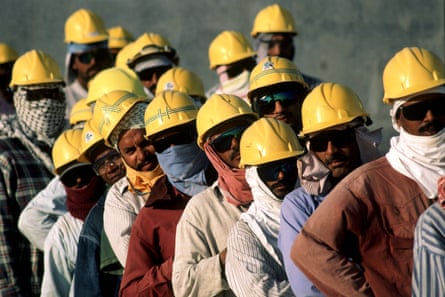William Martínez, who as a child worked on a sugarcane plantation in rural Nicaragua, learned the hard way what many in the US and Canada are now realising: that rising temperatures are costing lives and livelihoods.
Martínez, along with fellow villagers in La Isla, found himself getting sicker as he worked long, gruelling days in the fields under the beating Nicaraguan sun two decades ago. Workers at the nearby mill, which supplies molasses to alcohol companies, began to suffer kidney failure, and would be forced out of the workforce and into expensive and time-consuming dialysis. His father and uncles, addled with the same affliction, had died when Martínez was a boy, forcing him to join the workforce.
So many of the male workers in the village died over the decades that the community took on a new name: La Isla de Viudas, or the Island of Widows.
The disease that ravaged generations of workers came to be known in academic literature and the media as chronic kidney disease of unknown origin (CKDu), but for those working in the shadeless sugarcane fields, the cause was as clear as the skies overhead.
“Here, at the community level, we’ve lost so much, and it’s a loss that we continue to bear,” says Martínez, who is now, at 29, a researcher specialising in occupational health and safety. “But this isn’t a thing that will only affect Nicaragua – it will affect elsewhere, too, unless something is done to mitigate or prevent heat stress.”

More than 5 million people die each year worldwide due to excessively hot or cold conditions, according to a recent 20-year study, and heat-related deaths are climbing. Another study found that 37% of heat-related deaths around the globe in warm seasons could be tied to the climate emergency.
As a heatwave continues to bear down on the western US, subjecting more than 31 million people to temperatures above 45C, the pain is being felt in wealthier countries, too. Officials in the states of Oregon and Washington have reported nearly 200 deaths as a result of this summer’s blistering temperatures, which are thought to have also killed as many as 500 people in British Columbia, in western Canada. Meanwhile, wildfires sparked by the heatwave continue to devastate the region.
Kate Brown, the Democratic governor of Oregon, described the heatwave as a “harbinger of things to come” in an interview with CBS, and said that the hardest hit belonged to minority groups and other vulnerable communities, such as manual labourers. “We have to centre the voices of Black and brown and indigenous people at the forefront of our work as we do emergency preparedness,” she said.
Heat stress has long been a global issue, even if it is only now being felt acutely in the US.
In south-east Asia, urban garment factories are literal hotspots, causing workers to routinely fall ill.
“Indoor factories, where people wear protective gear, and where they don’t always have air conditioning – either for economic reasons or for reasons relating to the product – are places where you can easily get heatstroke,” says Jason Lee, a professor at the Yong Loo Lin School of Medicine at the National University of Singapore, and lead author of an ongoing study on how heat stress affects indoor and outdoor workers in Singapore, Vietnam and Cambodia.
Lee says that paying factory workers by the hour, rather than by their output, would cut down the incentive to avoid taking regular rest breaks.
In the Middle East, migrant construction workers – many from Nepal – have been particularly at risk. In Qatar, hundreds are estimated to be dying yearly from heat stress as they work on building infrastructure ahead of the football World Cup, a Guardian investigation found in 2019.
“We get a 30-minute break in eight hours,” one man from Bangladesh working on a construction site near Doha said at the time. “If we take an extra 20-minute break, they tell us to do an extra 20 minutes’ work.”

Back in Nicaragua, Martínez – who still lives in La Isla and works as a community organiser there – and other researchers have found a model they say is worth exporting.
Martínez, working with La Isla Network – a group of scientists dedicated to protecting workers from the most dangerous impacts of the climate crisis – worked with the Ingenio San Antonio sugar mill, where Martínez worked, to implement a programme of drinking water, rest and shade at intervals for workers. Rates of kidney injury have since declined, and two mills in Mexico are slated to pilot a version of the programme, known as the Adelante Initiative, next year.
“Heat stress removes people from the workforce, outright killing them, or often leading to a disease that is excessively expensive to treat, and in the context of Nepal or Nicaragua you’re then forcing children to enter the workforce at home or abroad to replace the affected parent – driving child labour,” says Jason Glaser, chief executive officer of La Isla Network. He added that companies in the US should implement similar practices. “That stuff we’re doing in Nicaragua and Mexico needs to happen at home.”
For Martínez, the urgency to act now is clear. “It’s common sense; the planet is getting hotter so more people are going to be at risk, which means more people are going to leave the workforce and burden health systems,” he says. “The most important thing is to protect workers, and that applies across all industries.”
